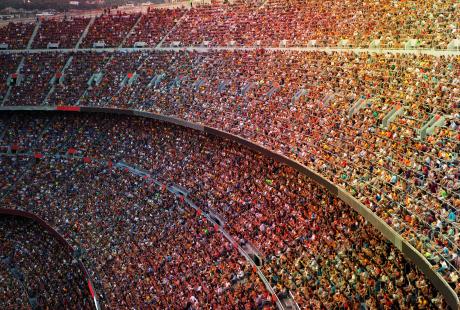The ‘Summer of Sport’ is near its end with just the Paralympics to go.
Alongside Team GB’s record breaking haul of gold medals, the story grabbing the headlines throughout August has been the variety of ways brands have been tackling the advertising restrictions bound together by the IOC’s Rule 40.
With the guidelines being slightly loosened this year, brands were presented with a unique opportunity to flex their muscles in front of a new and wider audience in the run up to Rio 2016.
For example, Under Armour, a brand that many athletes donned during Rio, launched two adverts featuring
Olympians including Michael Phelps to inspire budding sports enthusiasts.
But in light of stories about half-empty stadiums and tickets sales dropping by 8% in Rio compared to London
2012, what should marketers be doing to drive engagement amongst avid sports fans across the globe at the Paralympics and beyond?
>See also: How to combat hackers during the Rio 2016 Olympics
To make the most of the opportunity offered by big international sporting events in this technological era, marketers should be thinking of the wider opportunity to attract tourists to the destinations themselves.
Smart segmentation
According to the Brazilian Central Bank, tourists spent $1.586 billion during the World Cup, but of course not all of this money was spent in the stadium.
According to findings from recent research, well over half (68%) of Brits travelling to Rio extended their trip in order to sightsee, shop, dine and sunbathe.
With 80% of supporters saying that they spend more when on a sports tourism trip compared to regular holidays, marketers leading sports campaigns should be thinking of the options to partner with other brands across the hospitality and tourism industries, whether it be promotions with airlines, tour operators or hotel chains.
When it comes to reaching this market, incentives, such as vouchers, air miles and cashback are the way to go.
Over a third (34%) of sports fans utilise such promotions and the same amount also champion cashback offers.
This strategy becomes even more powerful when the offers are shareable. A hashtag that incorporates both your brand and the event or athletes, can encourage consumers to share and celebrate your company.
>See also: The Rio 2016 Olympics will be a defining moment for virtual reality
Just bear in mind that even under the IOC’s amended Rule 40, any direct mention of the tournament remains strictly off limits to all but official Paralympic sponsors.
Targeting the channels that matter
Marketers looking to engage sports fans must also pay attention to the channels this audience is using to plan their trips.
Mobile messaging groups, for instance, were used by well over a third (37%) of sports tourists planning trips this summer.
Unlike normal web traffic that’s attributed to a known source such as Facebook or Instagram, these private chat groups cannot be tracked by analytics tools.
It’s estimated that 84% of content in the UK is shared via ‘dark social’, however the only real indicator of this is when a customer lands directly on a specific webpage without having clicked through another marketing channel first.
With direct messaging providers such as Viber now opening the channel for “select partners” to serve native ads, dark social could be one of the most valuable sources of social insights because it represents the real interests of the person sharing and receiving content.
>See also: Going for gold – what can businesses learn from the Rio Olympics?
As such, it’s vital marketers don’t overlook the power of this channel.
The importance of timing
Much like Superbowl Ads, timing is of particular importance at the Paralympics due to its limited ‘shelf life’. Marketers need to be aware and on top of the latest trending topics.
Oreo’s ‘You can still dunk in the dark’ tweet stunt at the Superbowl back in 2013 still stands out as great, timely, responsive content.
Brands are regularly looking to echo the brand’s success and as a result must be ready to capitalise on moment marketing, and being able to target consumers with relevant content in real time is highly engaging and allows brands to hijack the most shareable trends.
Of course it remains to be seen what the turnout for the Paralympics this year will be, but brands should use trends in sports tourists’ booking habits when planning their presence at future international tournaments.
It is important to be flexible when approaching digital marketing, as marketing technologies are continually shifting.
This is leading to more opportunities for advertisers seeking to take advantage of events, like The Olympics.
Sourced by Nick Fletcher, director of multichannel at Rakuten Marketing







